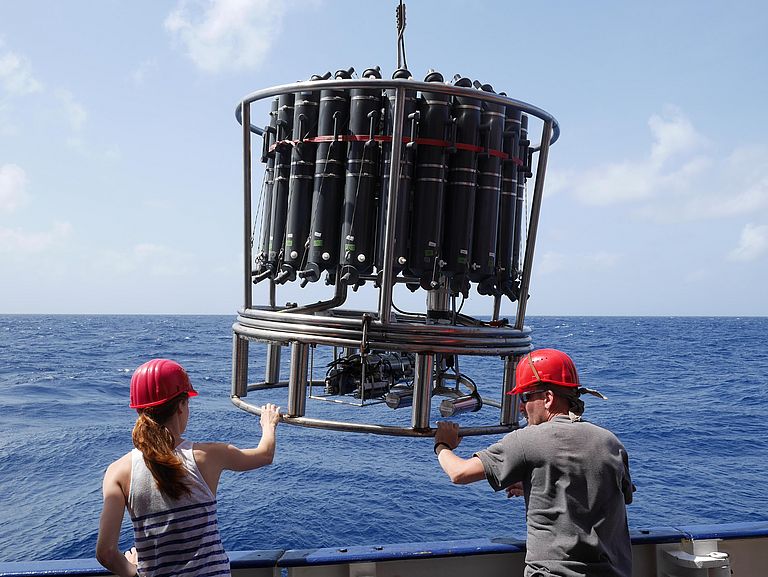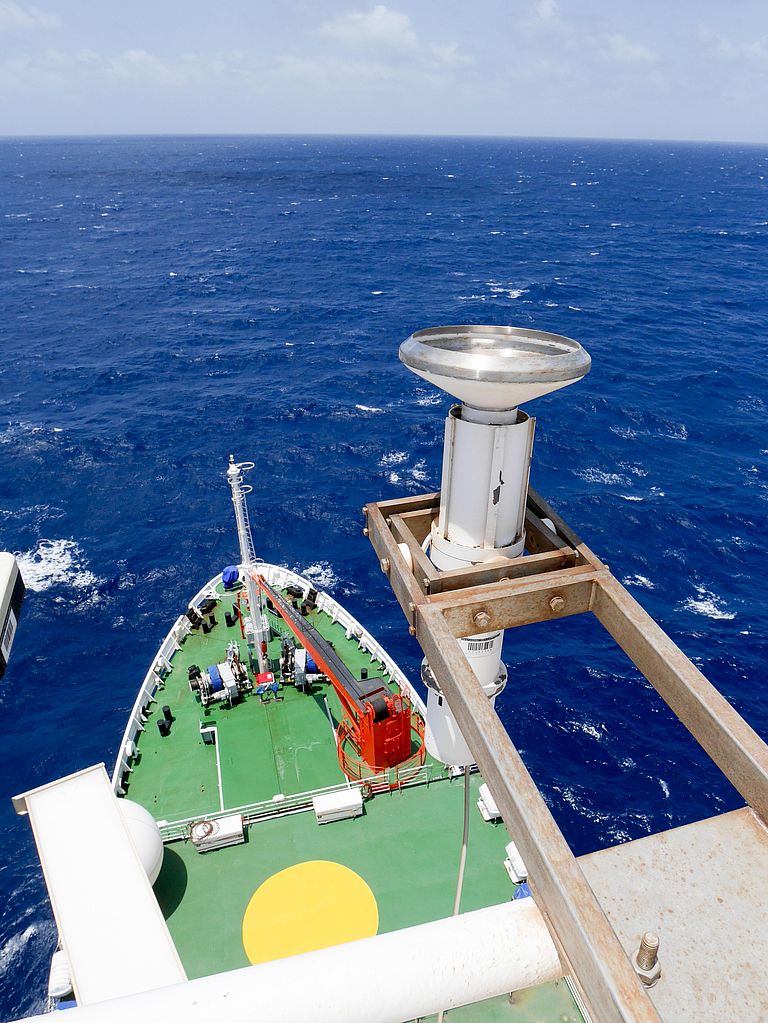Iron deficiency restrains marine microbes
GEOMAR scientists discover important process in the nutrient cycles of the tropical North Atlantic.
Scientists describe the tropical ocean often as a ‘blue desert’. The reason for this is the limited growth of unicellular algae compared to other oceanic regions, which would otherwise color the ocean green. The growth of these algae depends on nutrients such as nitrogen and phosphorus. At the same time, other marine organisms depend on these ‘ocean plants’ to eat and survive in the ocean.
„In principal, nitrogen and phosphorus are present even in the tropical ocean. But often these elements are incorporated into parts of dead plants and animals that are sinking to the ocean floor”, explains the lead author Dr. Thomas Browning of GEOMAR Helmholtz Centre for Ocean Research Kiel.
Microbes can get to these hidden nutrients by recycling the dead matter with the help of enzymes. As a result, nutrients, such as phosphorus, can be made available again. But enzymes require trace elements such as iron to function, as the biologist Browning and his colleagues from GEOMAR and the University of Southampton described in a study that was recently published in the international journal Nature Communications.
„If you look at the nutrient distributions in the oceans on a global scale, you can see regional differences”, says Dr. Browning. „Interestingly, we know from previous observations that for regions where nutrients are limiting the growth of marine algae, not all available pools of nutrients are being used. But why?“.
During a research cruise in the framework of the Collaborative Research Centre 754 “Climate – Biogeochemistry Interactions in the Tropical Ocean”, the research team was searching for an answer to this question. In field experiments iron was added to seawater and the microbial enzyme activity was determined. „We observed that the activity of a widely-distributed group of microbial enzymes was influenced by the availability of iron in the seawater“, Dr. Browning points out.
The results helped to confirm a hypotheses made in a previous study by scientists at the University of Oxford. „They demonstrated by laboratory experiments, that microbial enzymes need iron to process phosphorus, and suggested this could also be important in the ocean. We have confirmed for the first time that this is indeed the case“, Browning explains.
Between the key nutrients nitrogen and phosphorus, nitrogen is primarily seen as the main limiting factor for the growth of algae in the ocean. The additional supply of nitrogen into the world’s oceans by human activities, however, could change this situation in the future. Phosphorus limitation might become more widespread and the presence of iron would therefore be expected to play a major role. With respect to ecological cycles in the ocean, this shift would influence algae, their oxygen production, and ability to take up CO2 from the atmosphere.
Publication:
Browning, T. J., Achterberg, E. A., Yong, J. C., Rapp, I., Utermann, C., Engel, A. and Moore, C. M. 2017: Iron limitation of microbial phosphorus acquisition in the tropical North Atlantic. Nature Communications, 8, 15465, http://dx.doi.org/10.1038/ncomms15465
Note:
This work was funded by a Marie Skłodowska-Curie Independent Fellowship and a supporting Future Ocean Excellence cluster grant awarded to Dr. Thomas Browning.
Pictures in higher resolution:
Two crew members of cruise M116 take water samples with a so called CTD rosette. Photo: M. Visbeck, GEOMAR
The deep-blue waters of the tropical Atlantic ocean seen from RV METEOR. The colour indicates the limited availability of nutrients in the "blue desert". Photo: M. Visbeck, GEOMAR
Contact:
Angela Stippkugel (GEOMAR, Kommunikation & Medien), Tel.: 0431 600-2811, presse(at)geomar.de




